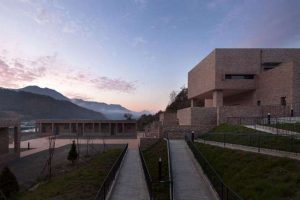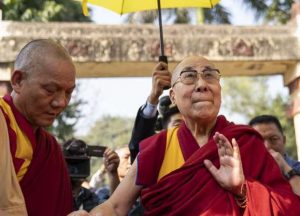The game is rigged from the start. All of our normal senses are set to monitor the outer world—what we see, hear, and even what we taste, smell, and touch. True enough, we do have inner sensations, generally in the nature of danger signals of pain, or of position, pressure, heat, or cold. The muscles, bladder, and the tubing of the digestive and urinary systems, and blood vessels (like the ones that give you a headache) have nociceptors. However, this is mainly from the coatings of these organs that are sensitive to over-stretching or swelling. The liver, kidney, lung tissue, joint cartilage, and brain and spinal cord have none. And so we can think “my right arm” and feel its presence, but not the bone within it, nor where our stomach, lungs, or parts of our brain actually are located in space. We simply do not have the physical hardware, the neural components, to check in on our internal organs, let alone the ever-active biochemical world that lives within us, or the transmutations happening in our mitochondria. That’s a biology shared with other mammals, and that seems to work out as far carrying on the process of basic living and dying. But for the spiritual practitioner this is a major challenge and, unfortunately, one that is often overlooked or totally missed, even in some of the most crucial spiritual practices.
Making sense
In various Buddhist meditations—and equally in Hindu, Daoist, and other traditions—inner-sensing is paramount. Particularly in various yogic movements, just going through the motions is minimally effective in accomplishing their designed goal. Yet, if you ask many a practitioner, East or West, what they felt during their practice, they may not even know what you are referring to. Here we are not concerned with the practice itself: visualizations, mantra placements, voicings, seeing colors or shapes within one’s form, and so on. Neither are we speaking of meditative experiences or “nyams,” which might feature strange sensations, visions, or exalted states. Nor are we referencing the one place where inner sensations are very much present: lung or pranic disorders, wherein inner energies have become displaced, excessive, or distorted in some manner. We mean actual sensation, the feeling of various inner body regions and/or the energy as it moves or collects in these areas. Why would this be important, since it is often overlooked or omitted altogether—certainly in Buddhist texts and modern practice.
The energetic value
Tantric practice, whether it be Buddhist, Shaivite, or Daoist, is a form of inner alchemy, arguably the most ancient transformative practices discovered by human beings (or gifted to them, as all traditional mythologies maintain). Alchemy is the very core of spiritual progress, even in systems where there is no mention or notion of the process that is taking place. It is one of manufacturing greater levels of higher substances—one could say sacred substances—than is required by the daily grind of getting through life. Such finer “substances” are in fact complex packets of energy-information, a photonic and electromagnetic mix whose composition is beyond the scope of contemporary scientific machinations. But they are known, and named, in various branches of sacred science. And here is how it works.
The symphony of psycho-bioenergetics
Within the spectrum of energies with which we are engaged, some are part of mechanical, thermodynamic or biological principles. But the majority are simply unknown: the experience of thoughts, feelings, sensations, and different levels of consciousness. From an energetic perspective, we have three major forms of nourishment, of “food” that sustains our being. We have physical food and drink, with all its subtle and highly varied biochemical and molecular substances. But it is also a particular frequency, raw material on an energetic level as well as a physical level. Next, we have the subtler level of breath, which already is well beyond the ken of modern science. Even the functions of argon (which is a whooping 1 per cent of what you breath), krypton, neon, and other noble gases are completely unknown and considered “inert.” And, finally, the food of sensory impressions, the energy that is pouring into us continually, is not even considered. These energies have no place within the limited confines of the electromagnetic spectrum, and are no doubt part of the 94.6 per cent of creation that is considered “dark matter” and “dark energy.” These are indeed strange name for highly subtle and refined phenomena, but they do describe our state of unknowing about them.
Alchemy in action
These kinds of foods, which themselves have further subtle subdivisions, undergo various changes, in the same way that the food you eat becomes a dynamic interchange of energies within the cells and mitochondria. As stated, the whole point of our meditations, movements, tsa-lung (channels and prana) practices, is to create a superabundance of higher substances. This means far more than is needed for daily life. How these change the actual structure of our biological and psychological self is a complex and truly magical process, and beyond the scope of what we are getting at here. Our point is that working with the energies associated with these inputs is the core of spiritual science. Indeed, there are a number of Tibetan works that are titled “lung-sem yermé,” which literally means prana-mind, inseparable but more essentially pointing to the fusion of breath and consciousness.
When we think of a part of our external form, we experience it as a sensation. If I say “right arm,” your can immediately sense its presence. However, if we are asked to feel the bones themselves, that would be difficult, and in fact impossible by the same neurological mechanism. The receptors are just not there, unless we press on the surface of the bone (periosteum). However, we can train in feeling the energy of these parts of our form. Not only is that the only way to “contact” them, it has profound effects. Focusing on an area feeds conscious energy (very similar to the energy of sense impressions) to this part of the body. Tying this to the breath, breathing into a part or region also directs its special energetic qualities. Further, moving the body with conscious intent brings another energetic food into the mix. By skillful conscious focus, a whole new set of psycho-spiritual events takes place. We start to manufacture more of “life’s finer forces,” as the title of a famous Western text so elegantly states.
Being there
On a practical level, this all means two things. First, we must train assiduously in learning to sense the presence and movement of energy in the body. Some of this may be in the form of tingles or ripples, electrical or thermal, and some may be dense, thick, and slow. We could call these electrical and magnetic as a distinction. Regardless, it is an ongoing adventure as we explore our own inner laboratory. Secondly, when we do practices, we should feel the energetic impact. This is very much emphasized by some teachers of tai-chi and qi gong, and is an important part of the movement of the Gurdjieff schools, which still flourish in the West. Naturally we have to learn to memorize various movements, postures, practices, chants, and visualizations. But this is just the platform for the real alchemy to happen. Noting, listening intently with an open and relaxed presence to the changes that occur from our spiritual work, takes us from rehearsal to the dynamic processes of transformation. Going through the motions without that component misses a crucial ingredient in this marvelous recipe of weaving solid cells into matrices of light and unknown threads of dark energy. Making a sense foundation of all our spiritual work, we embark on a fascinating journey, a direct experience of this impossible possibility.
See more
Related features from BDG
Psychological Development and the Five Elements
The Conflict of Tradition Versus Innovation
Confronting the Five Horsemen of the Current Apocalypse
Awareness, the Beginning of Change















